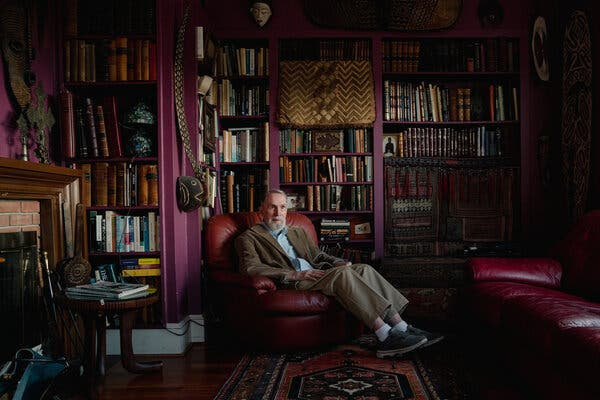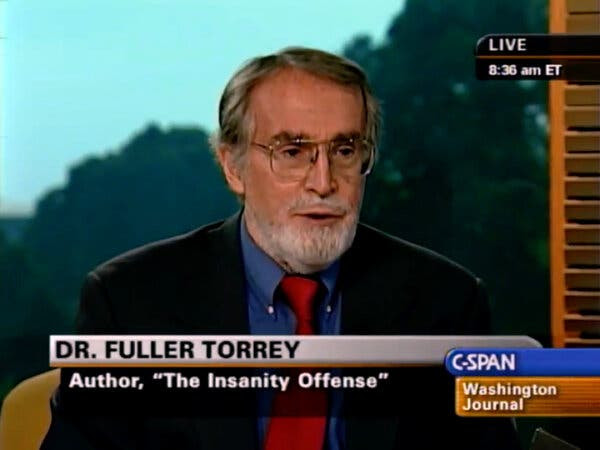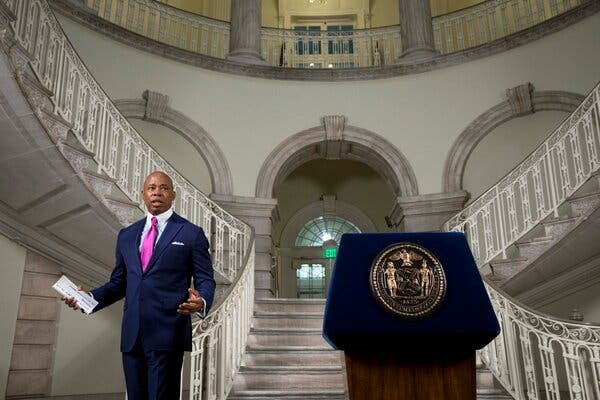Click Here for INL News Amazon Best Seller Books
INLTV Uncensored News
INLTV is Easy To Find Hard To Leave
Haunting images of beached ships reveal the destruction of the Aral Sea by cotton farming and climate change
EarthRepairCharter (inltv.co.uk)
https://inltv.co.uk/index.php/earthrepaircharter
Lincoln And Davis American War Presidents P1
Lincoln And Davis American War Presidents P2

Both Sides Brace for New Combat in Abortion War
After the midterms, supporters and opponents of abortion rights are re-evaluating their strategies and preparing for new battlefronts in the fight.
Handy Easy Email and World News Links WebMail
GoogleSearch INLTV.co.uk Y
USAMAIL W
Bahai.org AustralianDai
EuropeanNews
vice.com kanalukraina.tv RussianNews-themoscowtimes.
WashingtonPostNews WashingtonTimesNews
SydneyDailyNews-Daily Telegraph truthwiki.org them
WesternAustralianNews wikiped
spiked-online.com-humanity is underrated TheVerge The Truth Factory newsfollowup.com
encyclopediadramatica.rs them
INLNews Sponsored Website Log in Link
rightsinfo.org Progressive.org www.vox.com
forensic-architecture.org www.c-span.org wikispooks.com newint.org
Popular-Amazing-WILD-
New York Times Latest Home Page News Headlines
INLNewsTV was able to save this historical important article
- Textile Manufacturies in Indonesia Pollute The Citarum River at the Expense of Fashion
- EarthRepairCharter (inltv.co.uk)
- https://inltv.co.uk/index.php/earthrepaircharter
New York Times Latest Home Page News Headlines
New York Times Economy News Headlines
"NewYorkTimesLatestNews" http://www.wikipediaexposed.
New York Times Farhad Manjoo Columnist Blog News Headlines
New York Times Bret Stephens Columnist Blog News Headlines
New York Times Farhad Manjoo Columnist Blog News Headlines
New York Times Latest World News Headlines
New York Times Latest US News Headlines
New York Times Latest Americas News Headlines
New York Times Latest African News Headlines
New York Times Latest Politics News Headlines
New York Times Latest New York Region News Headlines
New York Times Latest Business News Headlines
New York Times Latest European News Headlines
New York Times Latest Asia Pacific News Headlines
New. York Times Middle East News Headlines
New York Times Education News Headlines
New York Times Economy News Headlines
New York Times Your Money News Headlines
New York Times Sports News Headlines
New York Times Small Business News Headlines
New York Times Upshot News Headlines
New York Times Energy and Environment News Headlines
New York Times Climate News Headlines
New York Times Space News Headlines
New York Times Science News Headlines
New York Times Health News Headlines
New York Times Well Being News Headlines
New York Times Recent Times Wire News Headlines
New York Times Most Shared News Headlines
New York Times Most Emailed News Headlines
New York Times Most Viewed News Headlines
|
ReplyForward
|
New York Times Latest Home Page News Headlines
New York Times Economy News Headlines
New York Times Latest World News Headlines
New York Times Latest US News Headlines
New York Times Latest Americas News Headlines
New York Times Latest African News Headlines
New York Times Latest Politics News Headlines
New York Times Latest New York Region News Headlines
New York Times Latest Business News Headlines
New York Times Latest European News Headlines
New York Times Latest Asia Pacific News Headlines
14/12/2022, 19:13:38
New. York Times Middle East News Headlines
New York Times Education News Headlines
New York Times Economy News Headlines
08/12/2022, 10:00:24
New York Times Latest World News Headlines
10/12/2022, 07:20:21
E. Fuller Torrey, M.D., Longtime Fierce Advocate for People With SMI, to Deliver IPS Keynote
E. Fuller Torrey, M.D., this year’s IPS keynote speaker, has for decades been a fierce advocate for patients with schizophrenia and other serious mental illnesses (SMI) in the public sector.
E. Fuller Torrey, M.D., founder of the Treatment Advocacy Center in Washington, D.C., and associate director for research at the Stanley Medical Research Institute, will deliver the keynote address at this year’s IPS: The Mental Health Services Conference in New York.
Behind New York City’s Shift on Mental Health, a Solitary Quest
The psychiatrist E. Fuller Torrey has been advocating tougher involuntary psychiatric treatment policies for 40 years. Now it’s paying off.


By Ellen Barry
BETHESDA, Md. — The psychiatrist E. Fuller Torrey is 85 years old and has Parkinson’s disease, the tremors at times so strong that his hand beats like a drum on the table.
Still, every morning when he reads the newspapers, he looks for accounts of violent behavior by people with severe mental illness, to add to an archive he has maintained since the 1980s.
His records include reports of people who, in the grip of psychosis, assaulted political figures or pushed strangers into the path of subway trains; parents who, while delusional, killed their children by smothering, drowning or beating them; adult children who, while off medication, killed their parents with swords, axes or hammers.
Dr. Torrey, who has done pioneering research into the biological basis of schizophrenia, has used these stories in service of an argument: that it was a mistake for the United States to shut down its public psychiatric hospitals without adequate follow-up care. And that to remedy this, the government should create systems to compel seriously mentally ill people in the community to get treatment.
For much of his career, Dr. Torrey was a lonely voice on this issue, disavowed by patient advocacy groups and by organized psychiatry. But his ideas are now animating major policy shifts, including the announcement by Mayor Eric Adams of New York last month that city officials would send people with untreated mental illnesses to hospitals, even if they posed no threat to others.
“This is the largest single attempt to change the thing that we said we wanted to change,” Dr. Torrey said.
“I think the stakes are large,” he added. “Because if it fails, if you have no improvement at all, I think people give up for another decade, just live with it for another decade before somebody else comes along with a new idea.”
Dr. Torrey’s influence on New York City’s policy is profound. The mayor’s adviser on this matter is Brian Stettin, who was thrust into mental health policy in 1999 when, as a lawyer in the office of Attorney General Eliot Spitzer of New York, he was asked to draft Kendra’s Law, named for a woman who was pushed in front of a subway train by a man with schizophrenia. The law allows a court to order a person with mental illness to comply with an outpatient treatment plan, risking involuntary commitment if the person refuses.
At the time, Mr. Stettin turned to Dr. Torrey’s organization, the Treatment Advocacy Center, for guidance and became such a believer that after leaving state government, he spent more than a decade as the group’s policy director. In an interview, Mr. Stettin described Dr. Torrey as “the single greatest influence on my thinking about the role of law and policy in ensuring the medical treatment of severe mental illness.”
Editors’ Picks

25 Restaurant Dishes We Couldn’t Stop Thinking About This Year

What We Learned From Week 14 in the N.F.L.

The Best Cakes for the Holidays Are Also the Simplest
Ira A. Burnim, the legal director of the Bazelon Center for Mental Health Law, said that in the course of arguing for his ideas, Dr. Torrey had overstated the dangerousness of people with severe mental illness, changing the way they are viewed.
“Every time there was a sensational crime involving a person with mental illness, Fuller Torrey would be out there, saying this is what happens when you have our current civil commitment laws,” he said. “Among the outcomes of Fuller’s work is the fear of people with mental illness.”
He added that Dr. Torrey had been extraordinarily effective at building a consensus in favor of compulsory outpatient treatment. “That’s where Torrey wants to go — if you need treatment, you can be picked up,” he said. “We’ve lost. You’ve got to understand, we’ve lost.”
The education of a skeptic


It is, perhaps, no surprise that Dr. Torrey became an outlier in his profession. He was a sophomore at Princeton when his mother called to tell him something was wrong with his sister, Rhoda, who had just turned 18 and was due to start college in the fall. She was lying on the front lawn, shouting, “The British are coming!”
He accompanied his mother to meetings with eminent psychiatrists, who lectured them on the possible causes of his sister’s schizophrenia. The chief of psychiatry at Massachusetts General Hospital suggested it was the trauma of his father’s death. The chairman of Columbia’s psychiatry department pointed to “family problems.”
“I knew it was nonsense from the beginning,” he said. “It made no sense whatsoever.”
Later, when he became a psychiatrist himself, Dr. Torrey fantasized about rounding up all the psychiatrists “who had these nonsense theories” and putting them on trial in a football stadium full of patients’ families. As a researcher, he plunged into the task of searching for biological causes for the disease. But it was too late for his mother, who took the Columbia chairman’s word for it.
“This was a very important man,” he said. “I think she died thinking it was true.”
In the 1970s, when the country was discharging hundreds of thousands of patients from public psychiatric hospitals, it was the era of “One Flew Over the Cuckoo’s Nest,” and the move was lauded as a forward-thinking reform. But Dr. Torrey warned that many former patients were being left wandering city streets untreated, describing them in his writing as “a legion of the inner-city damned.”
He recalled a woman he had encountered while treating patients at a homeless shelter in Washington, D.C. She struck him as familiar, so he pulled out her records: A decade earlier, while psychotic, she had been treated at St. Elizabeths, the public psychiatric hospital where he had worked, after attacking her daughter so brutally that the girl lost her arm. The woman had refused medication once she left the hospital.
“I said, ‘There’s something very wrong with this system,’” he said. “How is this woman allowed to be completely psychotic again?”


It was unusual for a psychiatrist to take such a blistering stance against deinstitutionalization, which had been celebrated by liberals. Over the years that followed, Dr. Torrey said, his arguments found more support from conservatives, landing on the opinion pages of The Wall Street Journal.
He went on to challenge all of the profession’s power centers. He lambasted the National Institutes of Mental Health for funding too little research on treatments for debilitating illnesses like schizophrenia. He fell out with the National Alliance on Mental Illness over his advocacy of outpatient commitment. He refused to pay dues to his local chapter of the American Psychiatric Association — an act of protest over its spending on a lobbyist — and was expelled, he said.
“I’m a longtime friend and colleague of Fuller’s, but Fuller caused institutional psychiatry a big pain in the butt,” said Dr. John Talbott, 87, a past president of the American Psychiatric Association. He traced the friction to deinstitutionalization. “Fuller was one of the few people who said from the very beginning that it was a big mistake. In part, he said it because of his sister.”
After her diagnosis, Dr. Torrey’s sister never lived independently again, moving from a public hospital to a series of group homes. She died at 70. It wasn’t a good life, Dr. Torrey said, but someone was always looking after her.
He could not say the same of the former residents of public psychiatric hospitals, who, as a result of deinstitutionalization, dispersed to a more isolated, precarious existence in apartment buildings or nursing homes.
“Most of us who would be on the street would say, ‘Oh, we’d love to have our own place,’” he said. “I think a lot of these people don’t want their own place. They do better in a group home.” A few of them, he said, discovered a strategy that would send them right back to the state hospital: They set fire to their rooms.
An idea takes hold


His team sought out legislators who were sympathetic because they had relatives with schizophrenia or had worked with severely mentally ill people. And they pushed for legislation after acts of violence, using the window of public dismay to put forward bills, like Kendra’s Law, that allowed for mandatory outpatient treatment.
The group’s record has been striking. Forty-seven states now have laws on assisted outpatient treatment, 30 of them developed with the involvement of TAC. Federal funds began flowing into outpatient commitment programs in 2016, and TAC has received a federal grant to develop programs around the country.
In the course of this campaign, Dr. Torrey has used statistics selectively to send a simplified message that untreated mental illnesses are a major cause of violence, said Jeff W. Swanson, a sociologist at the Duke University School of Medicine who has researched dangerousness.
“Unfortunately, that doesn’t comport with what the epidemiological research says,” he said. About 4 percent of violent acts can be directly attributed to mental illness, and many of them are low-level assaults, he said, “things like pushing and shoving and slapping people.” But the fear that followed catastrophic incidents proved powerful, politically.
“Fuller is a communicator — he wants to put information out there that moves hearts and minds and policymakers,” Dr. Swanson said. He also worried, like other experts interviewed, that tougher commitment laws could work only if mental health services like psychiatric beds and clinical care were widely available, which they are not.
“It’s absolutely correct that we need to get severely mentally ill people off the streets and out of awful conditions and into some sort of care,” said Dr. Talbott, who served as superintendent at Manhattan State Hospital, which is now Manhattan Psychiatric Center. “But we have destroyed the care system in large parts. So I don’t know how to do it overnight.”
Dr. Torrey said he shared that worry and had little sense of whether New York was prepared.
“I think that Adams is brave to try it,” he said. “This is difficult. It’s going to be difficult.” He added: “Does it make me nervous that it might fail? Yeah. If I was 20 years younger, would I go up to New York and help them? I might.”
But policy is not the first thing Dr. Torrey thinks of when he wakes up in the morning. What he wants to know is why his sister got sick.
He was exuberant last week about new research that had found that wolves in Yellowstone Park made more risky decisions when they were infected with a parasite, toxoplasma gondii. His own research has found evidence that the same parasite plays a role in schizophrenia. He thinks he knows who passed it to Rhoda: the family cat, Butterball.
Dr. Torrey also knows that his time is limited. The tremor in his hand began just after his 77th birthday, and he knew right away that it was Parkinson’s. Since then, he has tracked the progress of the disease with close attention that verges, at times, on enthusiasm.
“I’ve tried to learn about the brain my whole life, and now my brain’s gone south,” he said. “I get to observe it! That’s exciting! The brain is fascinating! It is me! I am an N of one!”
He is now in his 12th year with the disease. By year 15, he said, 80 percent of people with the disease have developed dementia. This is something he wanted Mr. Adams to know.
“They better work fast in New York,” he said. “I want to know what happens. I want to see the results of this experiment before I become demented.”
A previous version of this article gave an incorrect name for the organization Dr. Torrey fell out with. It is the National Alliance on Mental Illness, not the National Alliance for the Mentally Ill.
Ellen Barry covers mental health. She has served as The Times’s Boston bureau chief, London-based chief international correspondent and bureau chief in Moscow and New Delhi. She was part of a team that won the 2011 Pulitzer Prize for International Reporting. @EllenBarryNYT
Explore Our Coverage of the Adams Administration
Mayor Eric Adams is in the first year of his term as New York City confronts a surge in shootings and tries to recover from the pandemic.
-
Involuntary Hospitalization: Mayor Adams announced a plan to involuntarily remove mentally ill people from the city’s streets and hospitalize those who cannot care for themselves, but some experts have expressed skepticism.
-
Migrant Crisis: Mr. Adams has acknowledged that an influx of thousands of migrants arriving in New York City from Texas has presented challenges no one anticipated — including criticism directed at him at almost every turn.
-
School Budget Cuts: After a monthslong court battle over the public school budget, a state appellate court allowed more than $200 million in cuts to remain in place this year, even as the justices found that the city had violated the law.
-
Selective Admissions: After a pandemic-era moratorium, the Adams administration said the city’s selective middle schools can once again use grades to choose which students to admit. But some superintendents are saying no.
-
Test Scores: The first standardized test results to capture how the city’s schoolchildren did during the pandemic offered a mixed picture. The scores added pressure on Mr. Adams as he attempts to get students back on track.
New York Times Economy News Headlines
New York Times Latest US News Headlines
New York Times Latest Americas News Headlines
New York Times Latest African News Headlines
New York Times Latest Politics News Headlines
New York Times Latest New York Region News Headlines
New York Times Latest Business News Headlines
New York Times Latest European News Headlines
New York Times Latest Asia Pacific News Headlines
New. York Times Middle East News Headlines
New York Times Latest Politics News Headlines
New York Times Latest New York Region News Headlines
New York Times Latest Business News Headlines
New York Times Latest European News Headlines
New York Times Latest Asia Pacific News Headlines
New. York Times Middle East News Headlines
New York Times Education News Headlines
New York Times Economy News Headlines
New York Times Your Money News Headlines
New York Times Sports News Headlines
New York Times Small Business News Headlines
New York Times Upshot News Headlines
New York Times Energy and Environment News Headlines
New York Times Climate News Headlines
New York Times Space News Headlines
New York Times Science News Headlines
New York Times Health News Headlines
New York Times Well Being News Headlines
New York Times Recent Times Wire News Headlines
12/12/2022, 03:39:27
New York Times Most Shared News Headlines
New York Times Most Emailed News Headlines
New York Times Most Viewed News Headlines
New York Times Arts News Headlines
New York Times Economy. News Headlines
New York Times Media Advertising News Headlines
10/12/2022, 13:00:08
New York Times Deal Book News Headlines
New York Times Travel News Headlines
New York Times TMagazine News Headlines
New York Times Fashion and Style News Headlines
10/12/2022, 19:17:08
New York Times Technology News Headlines
New York Times Personal Tech News Headlines
New York Times Baseball News Headlines
New York Times Tennis News Headlines
New York Times Soccer News Headlines
New York Times Pro Football News Headlines
New York Times Hockey News Headlines
New York Times Golf News Headlines
New York Times College Football News Headlines
04/12/2022, 18:48:14
New York Times College Basketball News Headlines
New York Times Art and Design News Headlines
New York Times Books News Headlines
New York Times Sunday Book News Headlines
New York Times Dance News Headlines
New York Times Movies News Headlines
New York Times Music News Headlines
New York Times Television News Headlines
New York Times Theater News Headlines
New York Times Dinning and Wine News Headlines
New York Times Weddings News Headlines
New York Times Jobs News Headlines
New York Times Real Estate News Headlines
New York Times Automobiles News Headlines
10/12/2022, 13:00:08
New York Times Lens Blog News Headlines
New York Times Obituaries News Headlines
New York Times Chaeles M Blow Columnist News Headlines
New York Times Jamelle Bouie Columnist Blog News Headlines
New York Times David Brooks Columnist Blog News Headlines
21/10/2022, 00:00:09
New York Times Frank Bruni Columnist Blog News Headlines
New York Times Gail Collins Columnist Blog News Headlines
03/11/2022, 19:46:18
New York Times Ross Douthat Columnist Blog News Headlines
10/12/2022, 20:00:06
05/12/2022, 19:25:16
New York Times Maureen Dowd Columnist Blog News Headlines
26/11/2022, 14:00:04
19/11/2022, 14:19:06
05/11/2022, 13:04:09
New York Times Columnist Thomas L Friendman Blog News Headlines
New York Times Michelle Goldberg Columnist Blog News Headlines
New York Times Ezra Klein Columnist Blog News Headlines
New York Times Nicholas Kristof Columnist Blog News Headlines
30/11/2022, 22:43:41
New York Times Paul Krugman Columnist Blog News Headlines
02/12/2022, 19:18:05
New York Times Farhad Manjoo Columnist Blog News Headlines
New York Times Bret Stephens Columnist Blog News Headlines
New York Times Farhad Manjoo Columnist Blog News Headlines



